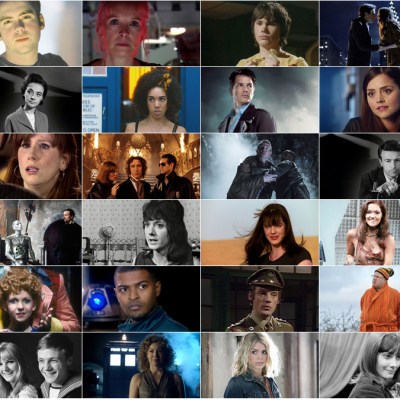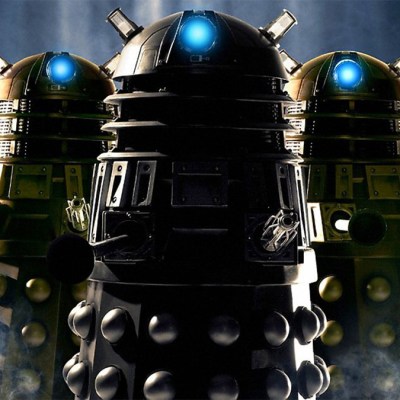Doctor Who: Ranking the Cybermen Stories – Which is the Best?
From half-cocked plans and illogical stories to moving explorations of human kindness, here are Doctor Who's classic and post-revival Cybermen stories, ranked in order of greatness.

The Cybermen are really camp.
They’re meant to be cold, logical, emotionless cyborg vampires, but mostly they’re just silly. They do slow fist-clenches and macho posturing. They wail and flap their arms around. They get killed by glitter. They make insanely convoluted plans and pretend they’re very clever. They are ridiculous and this is as entertaining as it is frustrating.
They are also a terrifying spectre of death. As a child, you know when you see them that death is near, so their mere appearance induces tension. Nearly every Cyberman story combines these elements of death and camp (two of life’s certainties) with a minority of them remembering that they’re ludicrously tragic rather than tragically ludicrous.
This isn’t necessarily a problem, it just means that you’re short-changed if you want very serious and intelligent stories about a dark mirror of humanity, but if you’re after endearingly silly robots sassing around Sixties’ visions of the future, then have you hit the goddamn jackpot.
Don’t expect many classics, and above all take this incredibly seriously. This ranking has been decided using a clever clever clever system* that only people who take sugar in their tea will understand. It’s what the Cybermen would have wanted.
* The ranking is based on whether it’s a good Cyberman story first and a good story second.
18. Nightmare in Silver
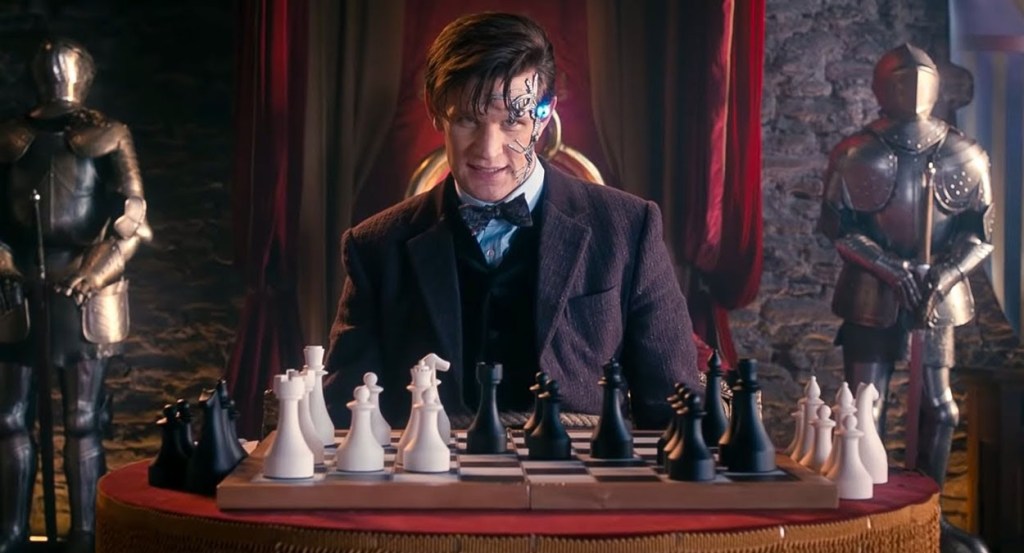
Is their plan to convert people? No.
Is it logical at least? Also no.
Trying to decide which of the bottom two should go where was tricky. Both attempt to do something different with the Cybermen, but in so doing veer too far from their actual concept. Both suffer from thinly sketched supporting casts. Both are dull. Focussing purely on their use of Cybermen, ‘Nightmare in Silver’ is worse. While the Cyberiad’s plans in the Lone Cyberman trilogy underwhelm, they are at least extrapolated from potentially interesting ideas. Here, they’re simply a misunderstanding of what makes the Cybermen work.
Part of this story’s reputation is down to the prior excitement about Neil Gaiman writing a Cyberman story, especially one hyped as a reinvention to make them scarier by harking back to Gaiman’s childhood memories of them. The resulting script was scaled back from an interesting but unachievable concept, rewritten by Steven Moffat, and helmed by a director who didn’t manage to elevate the material to something at least visually interesting. Fundamentally though, the script is inherently flawed.
The idea of the Cybermen being powerful is a fallacy that ignores their standard modus operandi: sneaking around in the shadows and using traitors to break in. They only mount assaults when they’re sure of an advantage. They’ve never adapted before, or seemed such a threat as to require a galaxy being destroyed. What we have here is Shiny Borg. They’re robots. We even see one take off its head and there’s no organic matter within.
Gaiman, by focussing on the fast-paced evolution of contemporary technology, leads the story away from eery stillness and the shadows of childhood memories towards a leaden wackiness, and the misreading is exacerbated by the other contributors.
You can see how there might be a good story in here, but because a lot happens very fast nothing is given room to breathe and the characters are barely sketched. The Cybermen of Gaiman’s memory (that monochrome spectre of death) is replaced here by dull visuals shorn of both camp and horror. There’s no slow build of dread, or sense of tragic inhumanity: just a series of tricks that would never be repeated.
Matt Smith gets some good moments (telling the intentionally annoying children not to wander off, offering his two cents on a marriage proposal) but also, with the line about Clara’s skirt, gets given one of the worst lines in the history of Doctor Who.
17. The Haunting of Villa Diodati / Ascension of the Cybermen / The Timeless Children
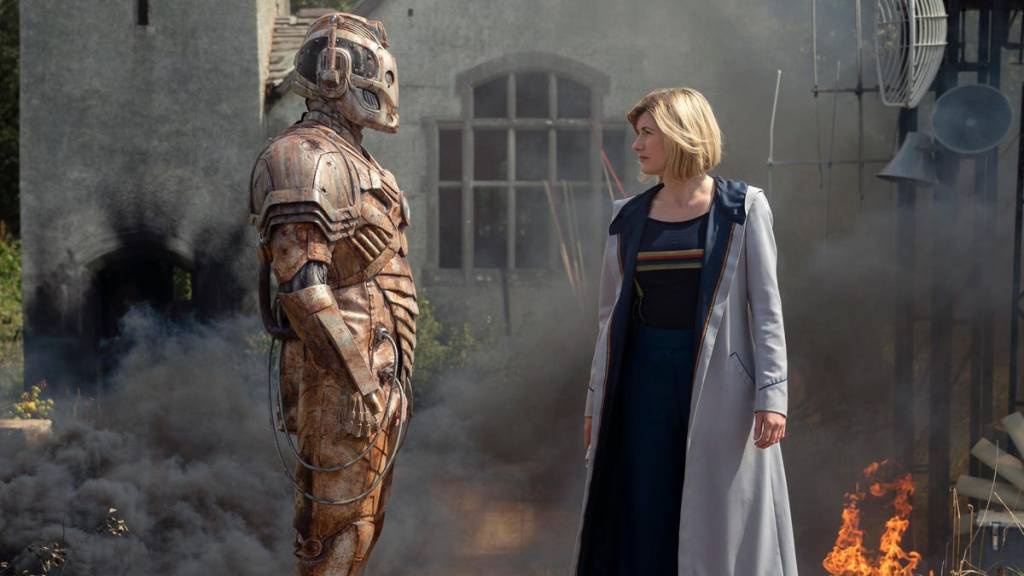
Is their plan to convert people? No.
Is it logical at least? Also no.
‘The Haunting of Villa Diodati’ is good until Ashad, the Lone Cyberman, arrives.
The idea of someone wanting to be converted is interesting (there’s potential to tap into the weaponising of emotion and frailty) but instead we get Tim Shaw’s angrier brother. Being told rather than shown Ashad’s backstory doesn’t help, but we’re presented with a one-note zealot. Why is he fanatical? We don’t know. Rather than tap into any nuance or pathos we have another of Chibnall’s overly nasty villains who delights in telling us, not merely that he killed his children, but that he slit their throats.
Ashad’s fanaticism, combined with the knowledge of all Cybermen, has the ultimate aim of turning the Cybermen into robots then wipe out all other life in the galaxy. This plan is so bad that the Master takes the piss out of him for it (“Oh you mean robots. You’ll be robots”). Ashad is then killed for McGuffin reasons, an anticlimax to an anticlimax. We then get the Cyber Lords, which is partly another potentially interesting concept dismissed quickly, but mostly a hilarious visual.
Focussing purely on the Cybermen, these stories are at best frustrating, at worst they feel like they were written by the Media Chaos Collective from The Adam & Joe Show.
16. The Wheel in Space
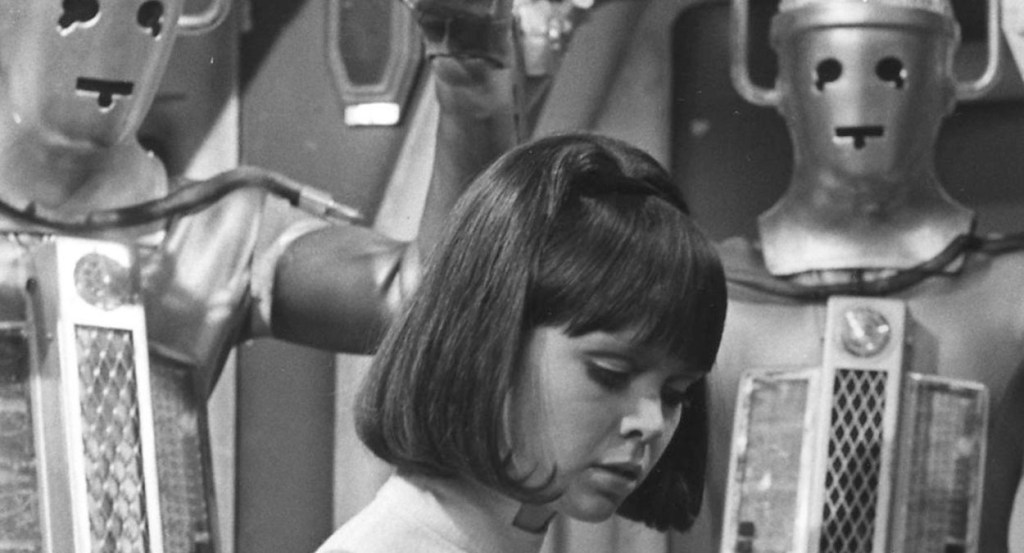
Is their plan to convert people? Nope.
Is it logical at least? No.
The Cybermen’s plan here isn’t as silly as their one from ‘The Moonbase’ but it’s more convoluted and not unlike building an elaborate marble run before checking if you even have a marble. According to the Doctor, they’re determined to invade Earth for its mineral wealth, because if there’s one thing that frightens children it’s the prospect of not having enough hematite. As the plan involves a lot of things sliding into place before everything kicks off, it’s a long traipse through Base Under Siege cliches to the Cybermen being repelled when someone remembers to turn the force field on. It’s not especially bad, it’s just dull.
Amidst this are some memorable scenes. The characterisation is strong. Zoe is introduced well as a human computer, an interesting counterpoint to the Cybermen. Troughton is excellent, which goes without saying. The ‘You know our ways’ confrontation, for example, is a great encapsulation of his Doctor: a bunched up, quiet performance giving way to a formidable presence.
15. Revenge of the Cybermen
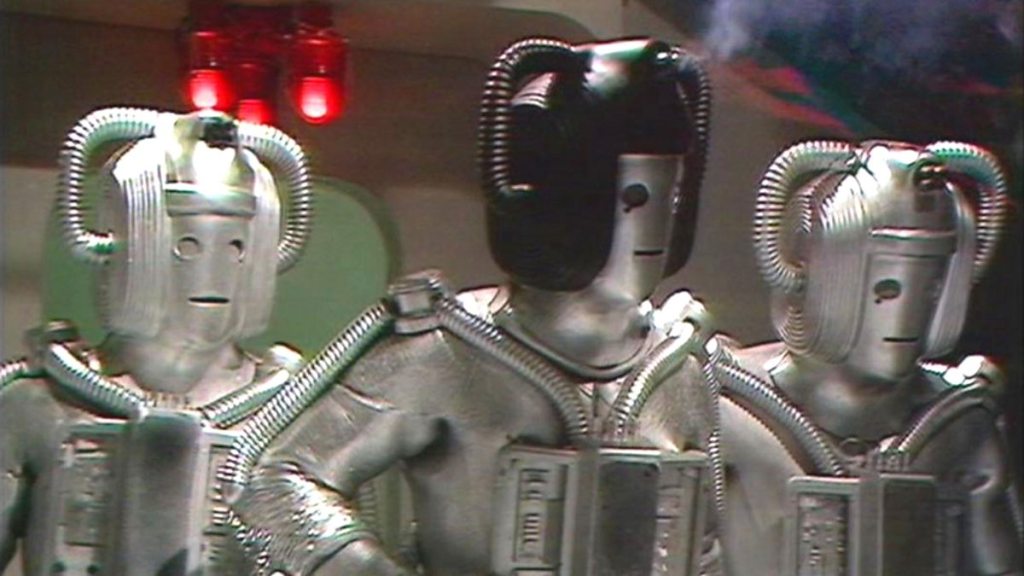
Is their plan to convert people? No.
Is it logical at least? Yes.
In which co-creator Gerry Davis writes for the Cybermen again, and as with Terry Nation’s mid-Seventies return, his approach to Doctor Who hasn’t changed since the Sixties. This story sticks out in Season 12 as a result. The confident production of ‘Genesis of the Daleks’ is replaced here with an apologetic slog that relies on the regulars’ chemistry to enliven it. Fortunately the regulars are Tom Baker, Lis Sladen and Ian Marter, which counteracts the tepid political intrigue on Voga.
The Cybermen are notoriously emotional here and memorably dismissed by the Doctor as being a bit rubbish. On the other hand, this is a rare example of them using stun guns. Given the whole ‘we must survive/you will be like us’ concept you’d think they’d use them more often.
Christopher Robbie’s performance as the Cyberleader is, like David Banks’ later performances in the role, not a little silly. Unlike David Banks, this doesn’t appear to be deliberate.
14. Attack of the Cybermen
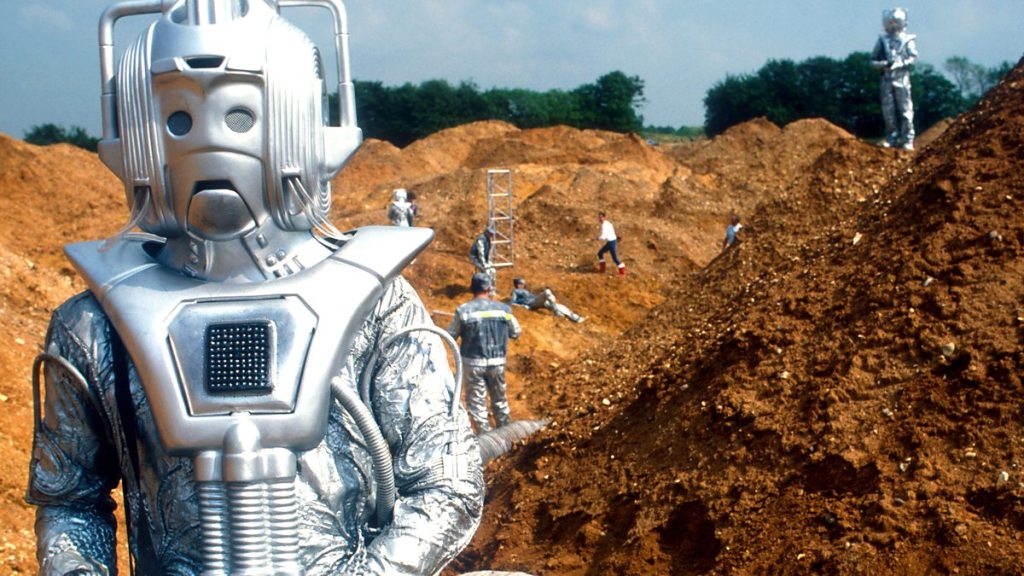
Is their plan to convert people? Not their main plan, but there is a fair bit of it.
Is it logical at least? A bit.
A solid first episode gives way to a very poor second: there are good ideas here but there are also very bad ones and a hollow ending, resulting in something full of sound and fury but signifying nothing.
It does have some good dialogue and actors, and a great central performance by Colin Baker: still unpleasant, but nowhere near as much as his debut story. He plays the final scene with enough conviction that you don’t immediately question the lack of internal logic involved. The Cryons look like someone tried to make a chrome Doctor Zoidberg mask, but also have distinct characters and some great dialogue. That one of their last lines is ‘We will survive’ is a nice touch.
Unfortunately the Cybermen here are rubbish. The story harks back to their previous stories but the sets pale in comparison to what they’re meant to evoke. They’re killed surprisingly easy, especially in comparison with ‘Earthshock’, and every actor playing one seems to be going for a different approach. They visibly panic at times, and imprison the Doctor in a roomful of explosives and then make ‘Leggit!’ motions when they discover he’s made a bomb. Cold. Logical. Ruthless.
13. Silver Nemesis
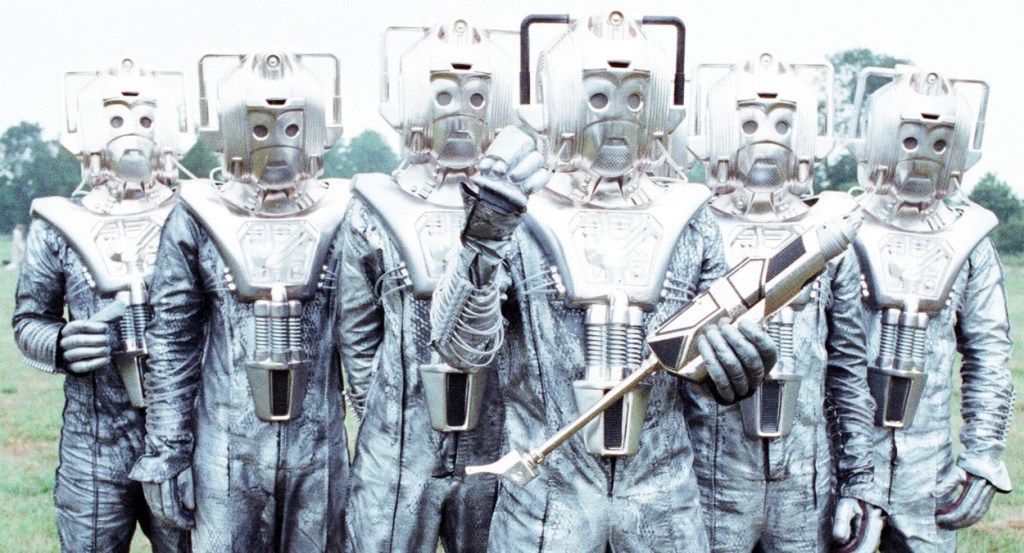
Is their plan to convert people? No.
Is it logical at least? In so far as any of ‘Silver Nemesis’ is logical, yes.
A story where the Cybermen are only involved because they’re metallic, and it was the Silver Anniversary of Doctor Who. Despite this contrivance, they start off well here by arriving impressively for the cliffhanger with a chrome makeover, casually destroying some Nazis and hanging out in a tomb getting confused by jazz.
However, they finish it by getting taken out by Ace firing gold coins at them (it’s like taking out vampires by shining a torch on them) and having their entire fleet destroyed. There’s no great reason for them to even be there.
‘Silver Nemesis’ as a story is a mess, and its extended VHS edit doesn’t make that much more sense than the televised version, but it’s mostly a fun mess and breezes by quickly. Sylvester McCoy and Sophie Aldred are having a great time, David Banks is always good value, and Fiona Walker’s Lady Peinforte is a hoot. It works well when viewed as a parody of the McCoy era.
12. The Five Doctors

Is their plan to convert people? No.
Is it logical at least? Yes.
There’s an episode of the Imaginary Advice podcast where Ross Sutherland and John Osborne are taking turns rewriting Four Weddings and a Funeral but each of them is trying to take it in a completely different direction. It’s really good.
Meanwhile, in 1983, Eric Saward kept adding squads of Cybermen to Terrance Dicks’ ‘Five Doctors’ script, and Dicks responded by blowing them up in memorable ways (a nonsensical chessboard trap and an astonishingly violent robot attack). On the one hand this undermines the Cybermen, especially after their bombastic return in ‘Earthshock’, but as Doctor Who has been undermining the Cybermen since 1967 (and ‘Earthshock’ is no exception) it seems in keeping for the anniversary story to continually dump on them too. And yet, somehow their presence as cannon fodder here is not their weakest moment.
Special mention to the posh Cyberman who asks ‘Hwhy was the main gate lehft unguarded?’
11. Army of Ghosts / Doomsday
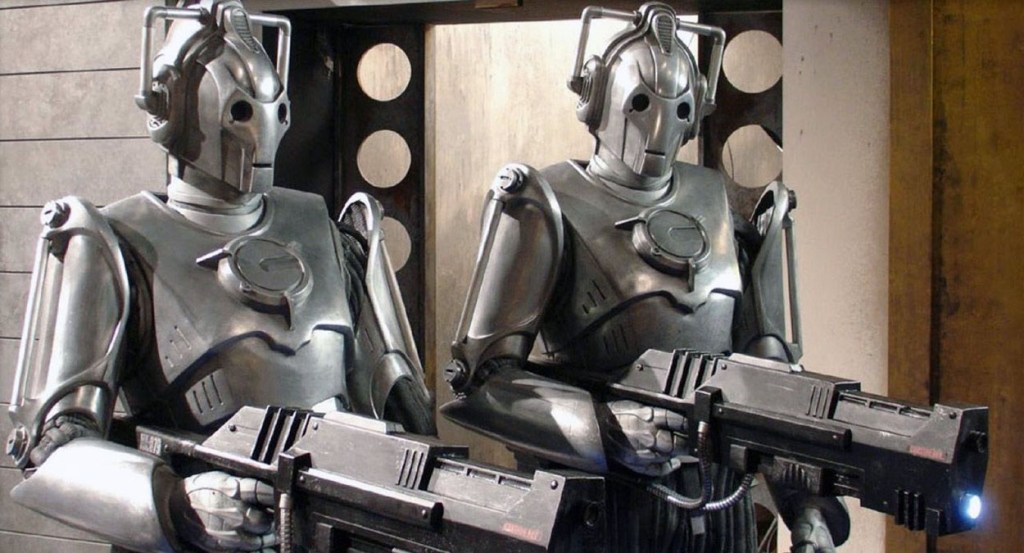
Is their plan to convert people? Sometimes.
Is it logical at least? Yes.
Having been revealed as the titular ghosts, the Cybermen use their dominant position on Earth to… stand around in people’s living rooms doing nothing. Meanwhile four Daleks arrive to steal their cliffhanger and confirm the Cybermen’s role as the second-best monster, then then the story gets rid of them all when it needs to engineer the separation of the Doctor and Rose. They provide spectacle, certainly, and a great argument scene with the Daleks, but not much beyond that. A popular story, for sure, but not a good Cybermen story.
10. Rise of the Cybermen / The Age of Steel
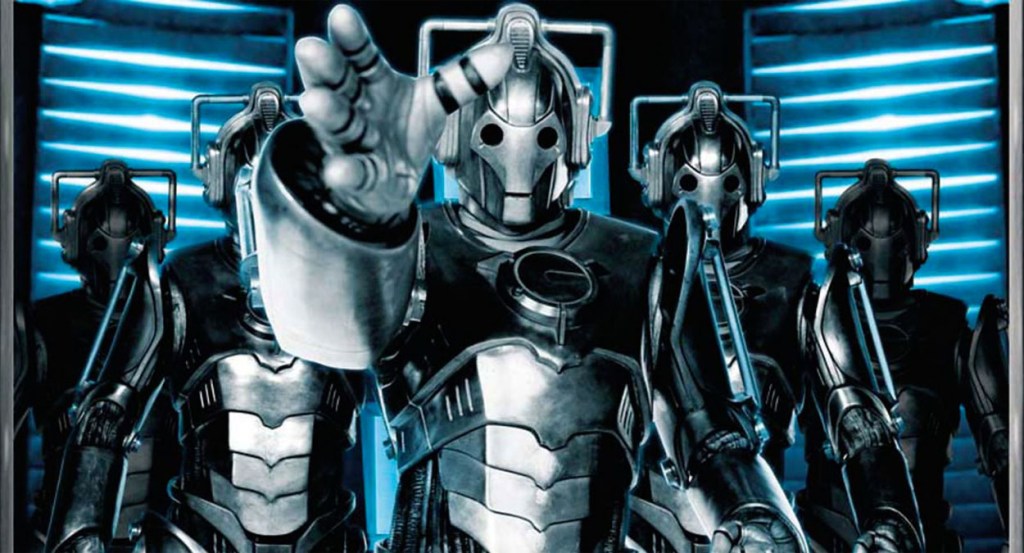
Is their plan to convert people? Yes.
Is it logical at least? Yes.
The return of the Cybermen for the new series was an exciting prospect, with ‘Caves of Androzani’ director Graeme Harper returning and rumours of the story being inspired by Big Finish’s Cybermen origin story ‘Spare Parts’. It is clear fairly early on that this is not like ‘Spare Parts’, and to be fair it was used more as a starting point than a source for adaptation. Instead this story feels like it’s trying to homage everything that’s gone before, and so we have get a heady combo of action, nonsense and body horror.
The first episode keeps the Cybermen to the peripheries and is mostly setup for the season finale. Meanwhile we have Roger Lloyd Pack’s endearingly barking performance as John Lumic, the creator of the Cybermen in this world, delivering his dialogue like the lovechild of Anthony Hopkins and the dog from Pixar’s Up, and laughing at his own quip with a hearty ‘BAHAHAAGH’. ‘The Lion Sleeps Tonight’ plays during a conversion scene. The Cybermen arrive late to the party, announcing their presence with a big light and stomping loudly. They grab their heads and gyrate before they explode, like they’ve got the same choreographer as Kylie. To be fair, this is only as camp as every other Cybermen story.
The second episode zips along, and occasionally pauses to actually let the horror sink in effectively (the Cybermen staring through the fence after they kill Ricky, the Jackie reveal, Sally the bride-to-be), but it also feels like the production team have decided to make an Eighties action film (for a family audience) in Cardiff (for £700,000).
9. The Tenth Planet
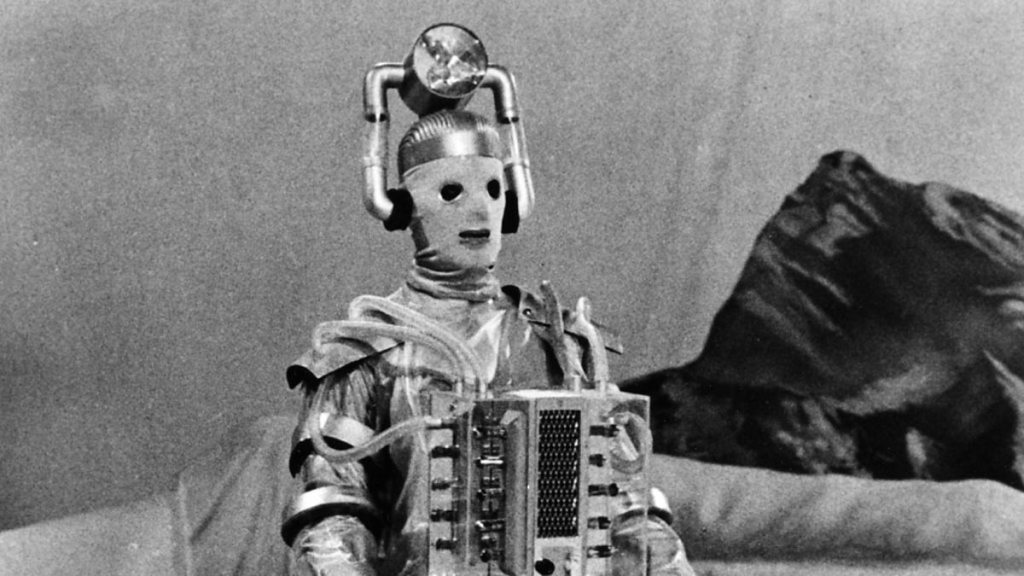
Is their plan to convert people? No.
Is it logical at least? If you’re on board with the whole Vampire Planet thing, yes.
The first episode is mostly setup, a lot of close-ups of astronauts, and the occasional inkling of the uncanny. It’s not exactly gripping, and demonstrates precisely why pre-credits sequences came in. The second episode is dominated by the full debut of the Cybermen, which is much better.
It should be stressed how weird the Cybermen are here with their mouths agape as their hands grip still-warm bodies, their vampire planet flying through space, their dead eyes peering through mesh. Their dispassionate nature is contrasted with Ben’s troubled reaction to killing something for the first time, and General Cutler’s fear for his son leading him to extreme actions. While this leads to some tension, episodes 3 and 4 are very similar to 1 and 2.
It’s a shame that the story is so repetitive as there are some great concepts in play, but these are abandoned in favour of a shoot ‘em up, with Ben no longer having any qualms about killing. This would be higher if it had stuck the landing.
8. Closing Time
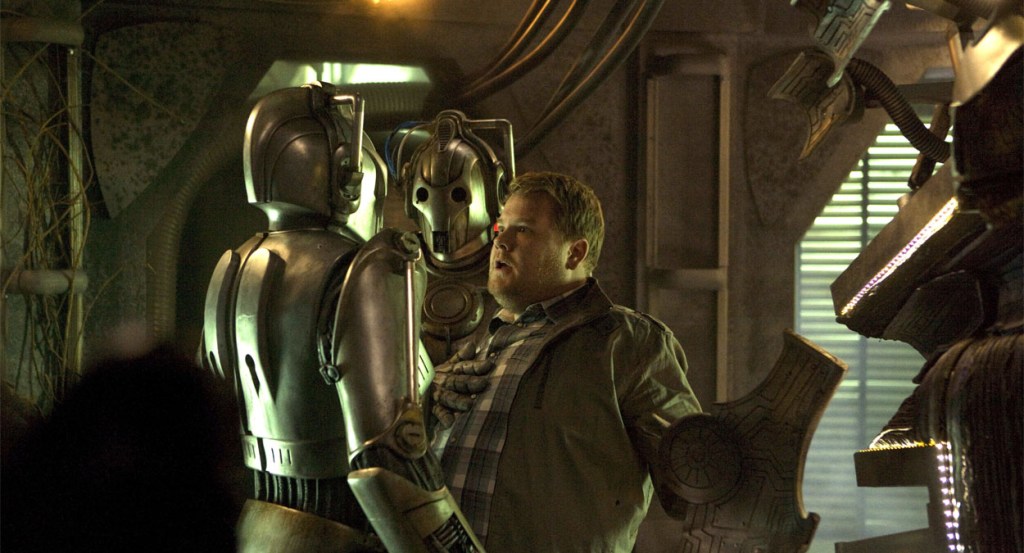
Is their plan to convert people? Yes.
Is it logical at least? Yes.
‘Closing Time’ is a strange one, because it’s mostly a tonal continuation of ‘The Lodger’ set mostly in a bright department store, but in many ways the depiction of the Cybermen here is on point: a small weakened group trying to survive, patiently building up their power. They are strange monsters lurking in the dark beneath the ground, and the idea of them haunting a shop basement is inspired. However they are on the periphery of returning character Craig Owens Trying To Be A Doctor Who companion, so the potential horror of this idea is unexplored.
While the comedy is hit and miss (there are some good gags but some very tired tropes too) this breezes along divertingly enough throughout its running time. Matt Smith is great here, and my issue with the resolution is not that Craig avoids conversion through a powerful emotional response, but that 30 seconds later this has somehow become all the Cybermen and their ship blowing up. A lot of people wanted a character played by James Corden to die though, so you can see how they’d be disappointed.
7. The Next Doctor
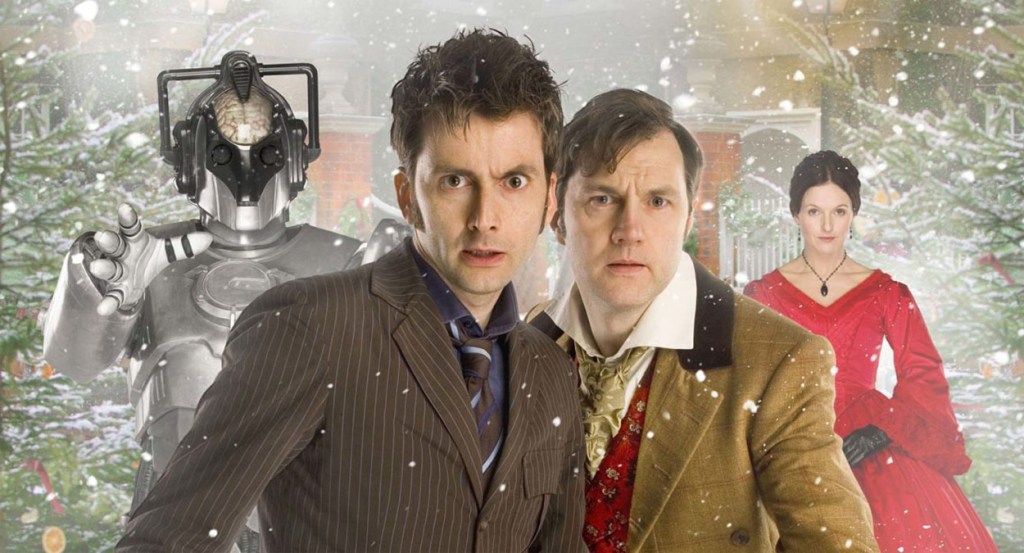
Is their plan to convert people? No.
Is it logical at least? Christ no.
A Christmas special, and so accordingly a mix of froth, grief and attempted infanticide. If you go with it then it’s an involving and entertaining yarn for the most part, only to fall apart in its resolution. This involves the Doctor using the Cybermen’s magic USB sticks to set off a rapid burst of unsatisfying contrivances, whereupon Dervla Kirwan’s character suddenly feels bad and screams at the Cybermen til they explode.
There’s also the Cybershades and Cyber-King, both of which only appear here. They work as disposable one-offs, and while there’s some sense of having a mobile conversion unit it feels like a colossal juggernaut is overkill. It’s a barmy idea that either makes you laugh or Log On. The Cybershades, which look like the Yetis from The Mighty Boosh, are apparently converted from small animals, which conjures up images of the Cybermen trying to wrangle cats, or Cybershades knocking vases from windowsills and refusing to eat the food that’s already in the bowl.
The Cybermen are here as spectacle rather than substance, and in that respect Andy Goddard directs them well. They’re shot from low angles marching out of the darkness. This story looks great in its daytime scenes, and the graveyard massacre’s stark monochrome with burst of red is a great burst of horror. Russell T. Davies continues to give the Cybermen appropriate yet funny dialogue.
David Morrissey and Dervla Kirwan are great guest stars, and while the journey is diverting enough the destination isn’t worth it, and doesn’t really deliver much in the way of substance.
6. The Tomb of the Cybermen
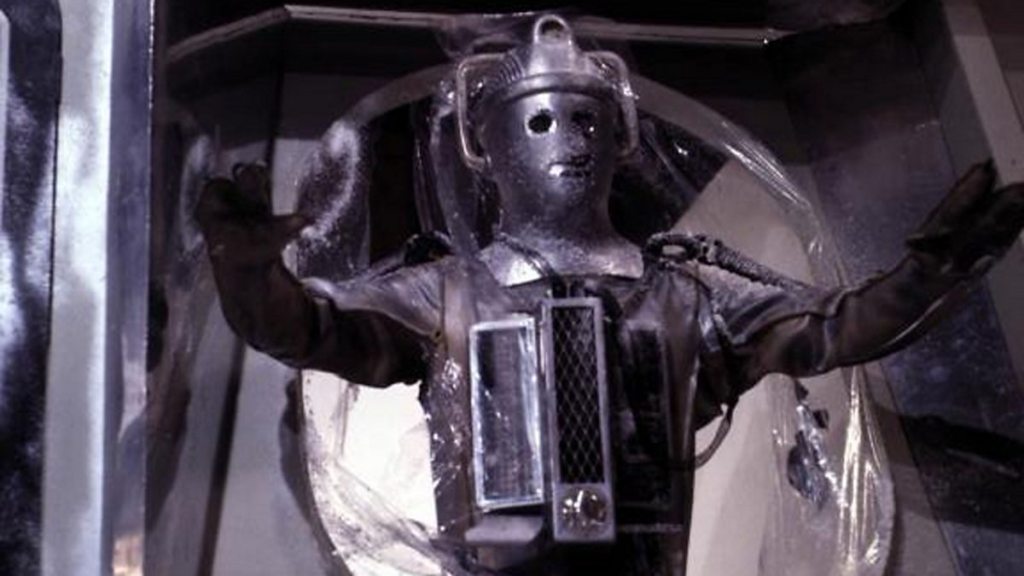
Is their plan to convert people? Yes, as long as they’re clever.
Is it logical at least? No.
This story contains iconic images, scenes and dialogue, but also quite a lot of nonsense in between. Here we have legendary lines like the chilling ‘You belong to us. You will be like us’ and the plaintive bleat of ‘We will survive’ (which should be their mission statement but rarely is). However, contrast these with the line ‘How would you know honey?’ (a bewildering quip delivered in a hokey American accent) and we have ‘Tomb’ neatly encapsulated: a high concept horror meshed with a B-movie, and the latter is ultimately dominant.
This is initially fun but peters out, and is a classic example of ‘Everybody involved has to do something stupid to keep the story going’ (indeed, the Doctor has to do something stupid just so it can start). The Cybermen are included in this, and while the shots of their leaving their tombs are rightly famous, their actual reasons for having the tombs are nebulous at best. A story where its highlights work better as clips in isolation.
5. The Invasion
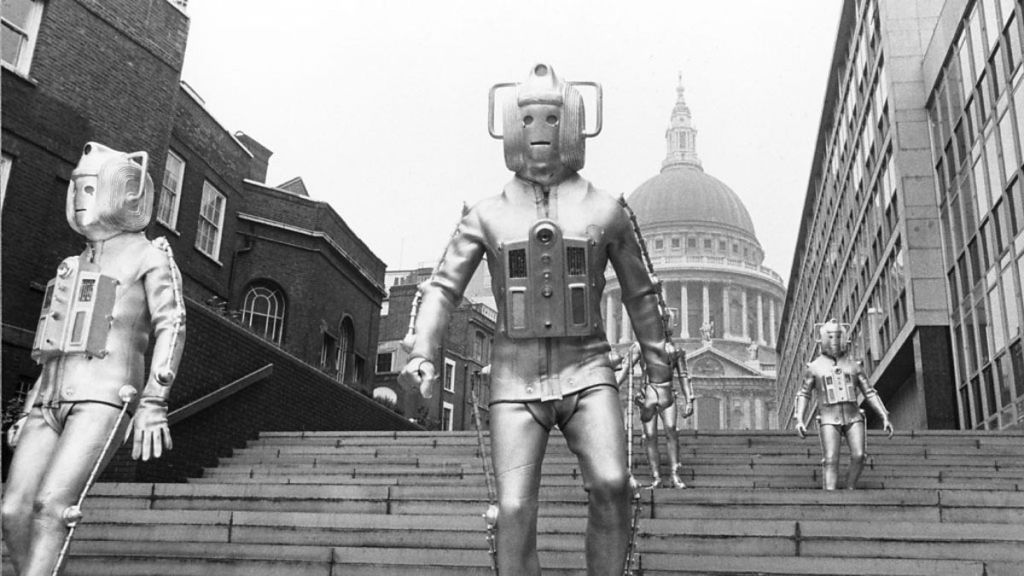
Is their plan to convert people? Yes.
Is it logical at least? Yes!
As often happened in the late Sixties, this was extended to fill a gap after another story fell through, but fortunately the padding in the case of ‘The Invasion’ is mainly provided by Tobias Vaughn and Packer (one of the all-time great Villain/Henchperson combos), and before the Cybermen turn up half way through we have an industrial espionage thriller. If anything this is more fun than the finale, which consists mainly of army bods narrating missile attacks.
This is perhaps the peak of the Cybermen’s strength as a visual: the images of them marching unchallenged through London are iconic despite being incredibly brief. We also have the endearing trait of every bit of equipment they use being prefixed by ‘Cyber’ (eg. Cyber-hypnotic force, Cyber-invasion, Cyber-megatron bomb).
Also unintentionally kitsch: The Cybermen are sometimes depicted as a planet-conquering power requiring galaxies be destroyed to stop them, but they’re defeated here by UNIT. That is to say: UNIT successfully attack and repel them. UNIT.
4. Earthshock
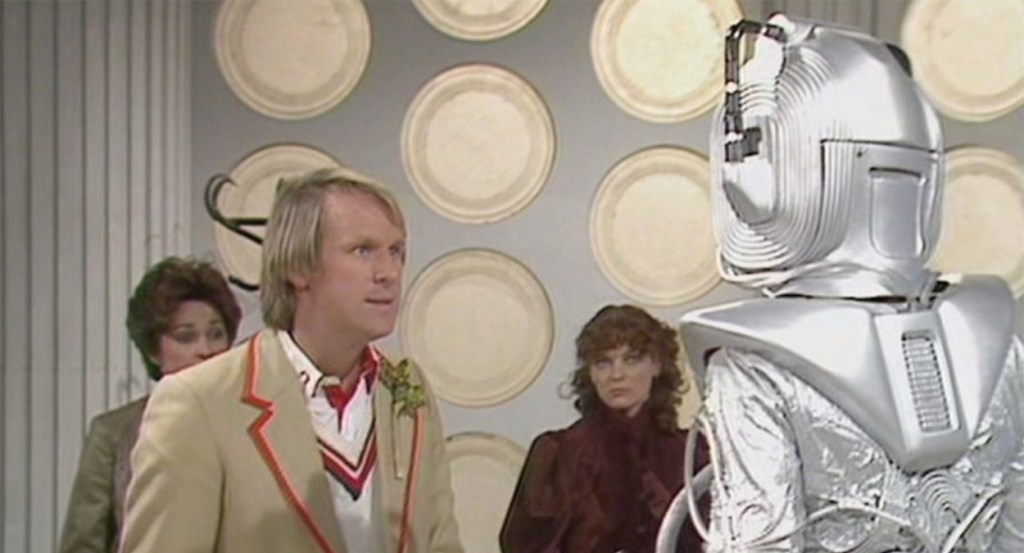
Is their plan to convert people? No.
Is it logical at least? Sometimes.
An interesting production: Eric Saward’s scripts could easily have bombed in the hands of any other directory working on the show in 1981, but Peter Grimwade turned them into gripping television. It’s fair to say the story doesn’t quite hang together but the shock moments landed with the audience, and it takes you along on the ride sufficiently to gloss over the cracks (Adric’s line about why a space freighter is now able to time travel is one of Doctor Who’s all-time great moments of Absolute Bullshit Delivered with Utter Conviction).
Like ‘Day of the Daleks’ though, the Cybermen are here purely for their legacy and impact. The story would work if you replaced the Cybermen with almost any other monster, and through repeat viewings the veneer of credibility is removed, but you can’t deny the momentum it builds and rebuilds.
Also I need to mention David Banks: this is his first of his four onscreen appearances as the Cyber Leader, and he establishes his grand tradition of being nothing like the popular conception of a Cyberman but no one cares because he’s relentlessly entertaining. His performance, along with Beryl Reid, brings a level of camp that makes this feel more like a Cyberman story than anything else in the mix. No one else can deliver a ‘Verb the Noun’ line like him, and ‘Earthshock’ not only has ‘Activate…the device’ but also ‘EXPLODE THE BOMB’. Lovely stuff.
3. The Moonbase
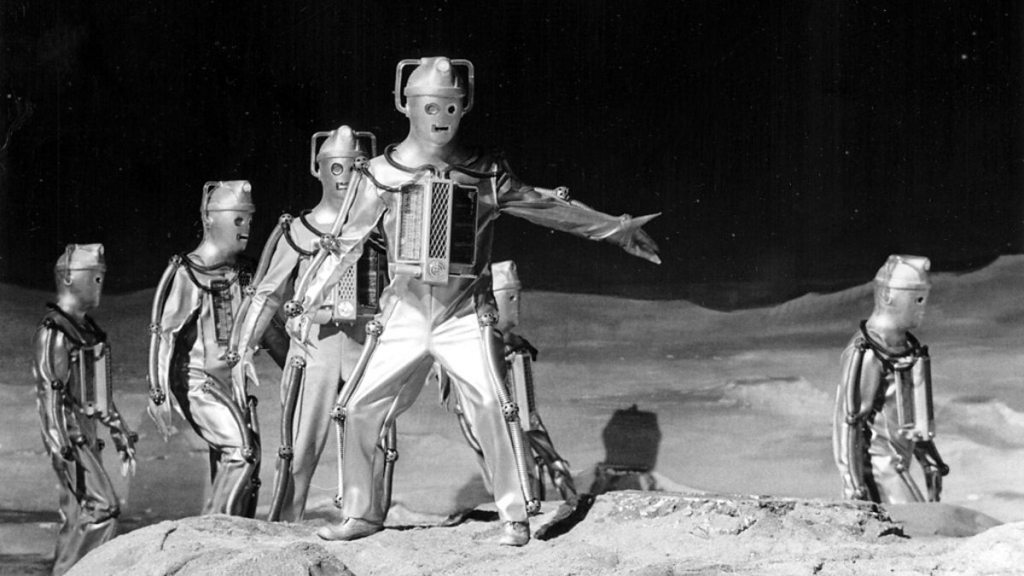
Is their plan to convert people? No.
Is it logical at least? Absolutely not.
On the one hand, all the potential, the novelty, the Cybermen as something distinctive within Doctor Who, it ends here. Here they are simply big shiny robots who want to destroy life on earth for no obvious reason. Their plan is as nonsensical as the science in this story.
For better or worse the Cybermen become themselves here (although they were on the way there by the end of ‘Tenth Planet’) and what they are is a generic monster with generic motives. They no longer look like they’re cyborgs, and the voice is accordingly more robotic, and despite the variations in costume and voice these two traits persist.
On the other hand, the Cybermen are delightfully sarcastic. The truculent base commander says ‘I don’t care who you are, you can get off the moon now!’ Jamie moans deliriously about a phantom piper. A tea tray saves the day. As Cybermen are defeated they float off into space and everyone yells ‘Hooray!” Resistance is useless: ‘The Moonbase’ is a blast. If you want to embrace the Cybermen at their camp and preposterous best this is the story for you.
2. Dark Water / Death in Heaven
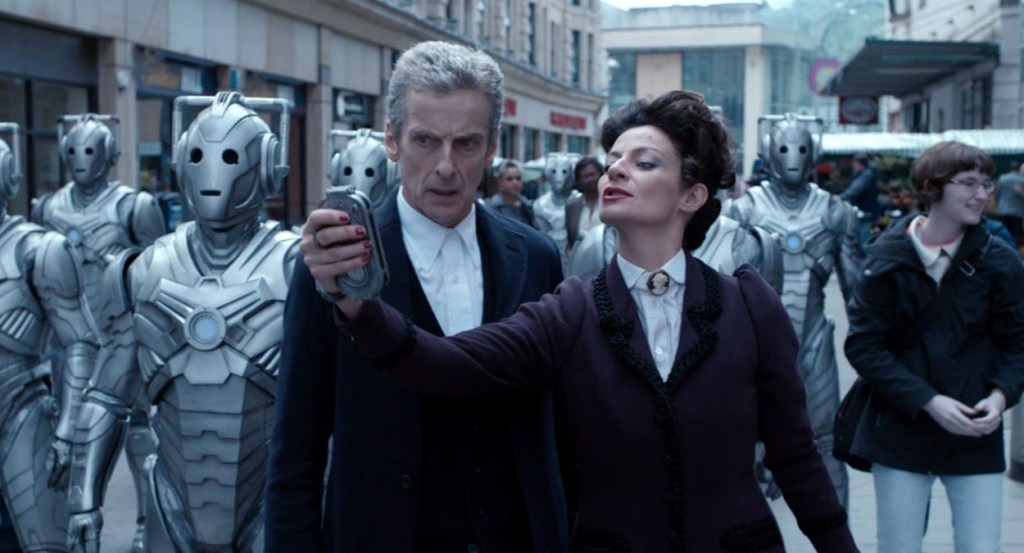
Is their plan to convert people? Well it’s not really their plan, but yes.
Is it logical at least? Yes.
Here Steven Moffat tries to reconcile the Cybermen’s association with death and the air of tragedy that hangs around them – their recurring crying motif and doomed planet origin story – by playing up the vampiric angle. The Cybermen can now use dead bodies, making the creatures of decay aspect clearer, and convert you into someone like them. They can fly. They mull around graveyards looking lost, which is a fantastic piece of imagery (if the Cybermen must survive at all costs, graveyards must really challenge their emotional inhibitors; the pull of death must be quite strong).
As you can see from this list, it’s rare for a Cyberman story to actually explore these angles. Most Cybermen stories simply have something shaped like Cybermen in them, but who are conceptually indistinct from (for example) the Kraals or War Machines. This is a Cybermen story that actually explores the idea of the Cybermen as is more interesting as a result.
1. World Enough and Time / The Doctor Falls
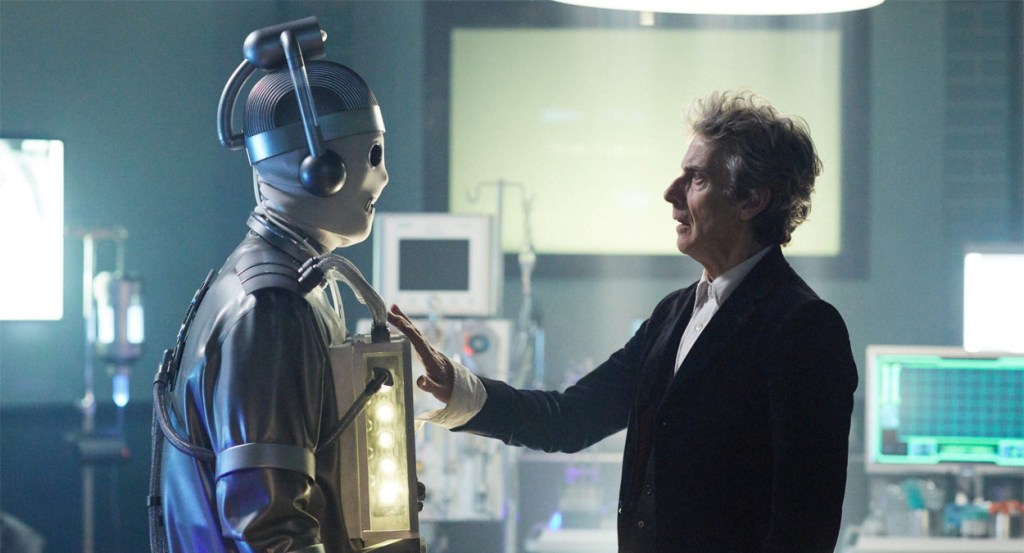
Is their plan to convert people? Yes.
Is it logical at least? Yes.
The Cybermen don’t make sense. Their onscreen appearances don’t provide anything like coherence. Here, Steven Moffat casually turns the Cybermen into a repeatedly actualised meme, a concept that reoccurs throughout history, taking out whole civilisations. In doing so Moffat turns their disparate depictions into a strength, making them an insidious threat that always returns. In doing so they become both physical and historical waves of violence.
Moffat, having thought carefully about how he uses the Cybermen, also nailed something most writers haven’t noticed: iconic Cyberman scenes are mostly visual (their leaving their tombs, walking down St Pauls, advancing in three ranks in ‘Earthshock’), but the best scenes in Cybermen stories are about the extremes of human behaviour, not the Cybermen: here we have the dying civilisation performing inhuman operations, and Bill’s struggle for her selfhood after being converted. In ‘Tomb’ we have the Doctor and Victoria’s conversation about loss, memory and adventure. In ‘The Invasion’ we have Tobias Vaughn goading Watkins into shooting him then chuckling as he survives. In ‘Spare Parts’, Big Finish’s origin story for the Cybermen, we have a partially converted woman returning home to her father. Upon realising that this cyborg is in fact his daughter he reacts not with fear, but with love. Indeed this is what ‘The Doctor Falls’ does so well, it makes it a story about people’s response to the Cybermen, and about opting for kindness, whether this be through emotional support and care or blowing the bad guys up.
This is all connected with Moffat depicting the clinical inhumanity of conversion in the face of extinction, while maintaining the Cybermen’s legacy as a spectre of death (their relentless march up the spaceship to find the survivors). In contrast to this he also uses Bill, as he did Danny Pink, as a lone figure retaining more humanity than other Cybermen (that he does this twice with black characters is presumably well-intentioned – both are ultimately heroic after facing the horrors of conversion – but also careless). Indeed it’s not clear whether Moffat intentionally puts the Doctor in a position of white Patriarchal authority here. His depiction of the Doctor covers both an idealised vision of masculine intellect – “The Doctor” – and a more obviously flawed ally who gives in to fury. Indeed here he journeys from the latter to the former.
Peter Capaldi’s Doctor started off as abrasive and alien, and the Cybermen work as an important contrast to him here: he’s the defence against an oncoming storm, sacrificing himself and restating his ideals strongly enough to kill the Master. This story ties up loose ends in a way you don’t see coming. Moffat, as you can see throughout his series, tends to explore ideas a few times before really honing in on what makes them work on the second or third try. The first few times he tries bigger changes, then reigns those in, and then finally starts adding to what’s already there in order to make it fit with the larger mythology. Here his ideas about the Cybermen, the Master and the Doctor all strive to make sense of what’s gone before and advance it. The result is incredible.

